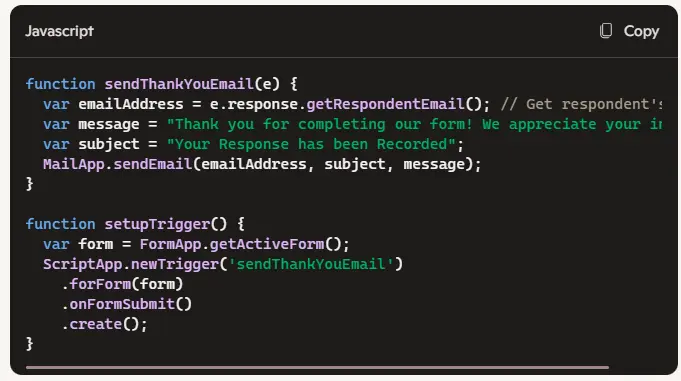Google Forms is more than just a tool for quickly gathering responses—it’s a versatile platform that, when mastered, can revolutionize the way you capture data, streamline workflows, and even enhance your brand’s online presence. Whether you’re a small business owner looking for a sleek event registration form, an educator eager to create interactive quizzes, or a digital marketer wanting to capture leads in an engaging format, this ultimate guide will walk you through every aspect of customized form development with Google Forms. By the end of this guide, you will have a clear understanding of how to leverage advanced features, apply best practices for customization, integrate with other Google tools, and ultimately master Google Forms like a pro.
In this comprehensive, article, we will cover:
- Introduction to Google Forms: Understand the fundamentals and why Google Forms is your go-to tool for data collection.
- Getting Started: Learn how to access, navigate, and create your first form with ease.
- Custom Form Development Fundamentals: Dive into designing questions, adding fields, and customizing layouts.
- Advanced Customization Techniques: Discover how to integrate multimedia, utilize conditional logic, and beautify your forms with custom themes.
- Integrations and Automation: Explore how Google Forms works with other Google Workspace tools and how you can automate workflows with Google Apps Script.
- Practical Use Cases: See real-world examples from business, education, and events to unlock the full potential of your forms.
- Best Practices and Optimization Tips: Learn how to design forms for high conversion rates, optimal readability, and maximum user engagement.
- Troubleshooting and FAQs: Get answers to common problems and learn tips that help ensure your forms run smoothly.
Introduction to Google Forms
Google Forms is a dynamic, free tool that enables users to create customized forms, surveys, quizzes, and more with minimal technical expertise. As a part of the Google Workspace ecosystem, it offers seamless integration with other Google tools such as Google Sheets, Google Drive, and Gmail, making it ideal for both simple data collection tasks and complex workflow automation.
Why Choose Google Forms?
- Ease of Use: The intuitive interface ensures that even beginners can design forms without prior training.
- Flexibility: Whether it’s creating a simple poll or a detailed survey with conditional logic, Google Forms offers a range of functionalities to suit your needs.
- Collaboration: Easily share forms with colleagues, allowing for real-time collaboration and feedback.
- Cost-effective: As a free tool, it delivers professional-grade results without the cost overhead, making it accessible for businesses and educators alike.
By using advanced customization techniques, you not only enhance user interaction but also maintain consistency with your brand identity. In the competitive digital landscape, mastering Google Forms with expert precision is a vital asset to any professional toolkit.
Getting Started: Accessing and Navigating Google Forms
Before diving into the intricate world of customized form development, it’s essential to become comfortable with the basics of Google Forms. Let’s explore how to access this powerful tool and get acquainted with its interface.
Accessing Google Forms
Google Forms can be accessed easily from your Google account. Here’s how to get started:
- Log into Your Google Account: Open your preferred browser and navigate to Google Forms.
- Choose a Template or a Blank Form: Once on the homepage, you’ll see a variety of templates geared toward specific use cases such as event registration, survey, or quiz creation. For beginners, starting with a blank form provides maximum creative freedom.
Navigating the Interface
Upon selecting a template or a blank form, you’ll be greeted with a clean, user-friendly interface. The primary components of the interface include:
- Form Title and Description: At the top of the form, you can set a title and add a description to inform respondents about the purpose of the form.
- Question Editor: The central area where you can add, edit, and arrange different types of questions.
- Sidebar: On the right side, you will find options to add sections, images, videos, or new question types along with customization features.
Take some time to familiarize yourself with these elements because a deep understanding of the interface will make customization much easier as you harness more advanced features later on.
Creating a New Form: A Step-by-Step Guide
Now that you’ve acquainted yourself with the basics, let’s create a new form from scratch. This section will outline a detailed, step-by-step process to develop an engaging, professional-grade form.
Designing the Structure of Your Form
A well-structured form is the foundation of successful data collection. Consider planning your form’s layout before you start. Here’s a general blueprint:
- Introduction Section: Begin with a welcome message or brief introduction to set the tone.
- Core Questions: Organize questions into logically grouped sections rather than a long, daunting list.
- Follow-Up Sections: Depending on the responses, you can create conditional sections that appear only if certain criteria are met.
- Conclusion: End with a thank you message or instructions on next steps.
By planning the structure in advance, you will create a coherent flow that guides respondents naturally from start to finish.
Adding and Customizing Questions
Google Forms supports numerous question types including multiple choice, checkboxes, dropdowns, linear scales, and even file uploads. Here’s how to add and customize them:
- Adding a Question:
- Click on the “+” icon in the sidebar.
- A new question will appear in the editor pane.
- Choosing the Question Type:
- Click the dropdown menu next to the question title to choose the appropriate type of question.
- Options range from short-answer fields for collecting brief responses to paragraph fields for detailed input.
- Customizing Question Settings:
- Required Questions: Toggle the “Required” option if a question must be answered before submission.
- Validation: Use data validation to ensure that responses meet certain criteria, such as numerical values or email addresses.
- Help Text: Add a brief description, or hint text, below the question to provide clarity on what is expected.
- Rearranging Questions:
- Drag and drop questions to reorder them. This is crucial for maintaining an intuitive flow.
When scripting the questions, consider using descriptive labels and keywords to improve clarity and aid in SEO if your form is embedded on your website.
Customizing Themes and Designs
The visual appearance of your form plays a significant role in user engagement. Whether you’re matching your company’s brand or simply making the interface more appealing, customization is key.
Choosing Colors, Fonts, and Backgrounds
Google Forms provides an array of options to adjust the theme:
- Theme Options Panel: Access the theme options by clicking on the “Customize Theme” icon.
- Color Customization:
- Choose a color palette that reflects your brand identity.
- Use contrasting colors to ensure that text and backgrounds are clearly legible.
- Font Choices:
- Select from multiple font styles to match the tone of your form—serif fonts for a professional look or sans-serif for a modern design.
- Backgrounds:
- Replace the default background with a custom image or pattern to create a distinctive look.
A well-considered design not only enhances aesthetics but can also improve the conversion rate by making the form inviting and easy to navigate.
Branding Your Form for Maximum Impact
Brand consistency builds trust and recognition. Here are some tips to infuse your brand into every aspect of your Google Form:
- Logo Integration: Upload your company logo in the header or background image areas.
- Custom Fonts and Colors: Use your brand’s typography and color scheme throughout the form.
- Personalized Messages: Tailor the welcome and thank you messages with branded language that resonates with your audience.
- Consistent Terminology: Use familiar terms that reflect your business’s voice and identity.
By integrating these elements, your form not only becomes a robust data collection tool but also serves as an extension of your brand’s digital identity.
Advanced Google Forms Techniques
Once you’ve gotten comfortable with the fundamentals, it’s time to explore advanced features that elevate your forms from standard templates to fully customized user experiences.
Conditional Logic and Section-Based Navigation
Conditional logic (also known as branching) allows you to customize the respondent’s journey through the form. This advanced feature ensures that users only see questions relevant to their previous answers, thereby reducing complexity and improving completion rates.
- Creating Sections: Break your form into multiple sections to group related questions.
- Adding Conditional Paths:
- In the section settings, click on the “Go to section based on answer” option.
- Set up different paths depending on user responses.
For example, if you’re conducting a survey with varying question sets for different demographics, conditional logic can dynamically adjust which questions appear. This keeps your form concise and directly relevant to each respondent.
Integrating Multimedia Elements
Visual and audio elements can significantly improve engagement. Google Forms makes it easy to incorporate images and videos into your forms:
- Images:
- Add images to questions or sections to provide context or visual stimuli.
- Use high-resolution pictures that align with your branding.
- Videos:
- Embed YouTube videos to demonstrate a product, provide tutorials, or simply engage your audience.
- Interactive Elements:
- Use icons and illustrations to break up text and make the form more visually appealing.
Incorporating multimedia not only enhances comprehensiveness but also makes your form more dynamic and engaging for respondents.
Using Add-Ons and Extensions
Google Forms supports a range of add-ons that can supercharge your form capabilities without the need for coding. Some popular add-ons include:
- Form Notifications: Automatically send customized email notifications when a response is submitted.
- Form Publisher: Convert form responses into formatted documents, PDFs, or Google Docs for easy distribution.
- Choice Eliminator 2: Ensure that respondents only select unique options by removing choices after they’ve been picked.
- Time Management Add-Ons: Track and limit the response time for quizzes or exams.
These tools can help tailor your form’s functionality to meet specific needs, making data collection even more streamlined and efficient.
Data Collection, Analysis, and Integration
A form is only as powerful as the data it gathers. Once your Google Form is live, the next crucial step is ensuring that the data is properly managed, analyzed, and integrated into your workflows.
Linking Google Forms to Google Sheets
One of the greatest strengths of Google Forms is its seamless integration with Google Sheets. When you link your form to a spreadsheet, every response is automatically recorded in real time:
- Creating the Link:
- In the Google Forms editor, click on the “Responses” tab.
- Click the green Sheets icon to create a new spreadsheet linked to your form responses.
- Benefits:
- Real-Time Data Updates: Track responses as they come in instantly.
- Enhanced Data Management: Use Sheets functionalities to sort, filter, and analyze responses.
- Visualization: Generate graphs and charts within Sheets to quickly derive insights from your data.
With this integration, you not only streamline the data collection process but also lay the groundwork for advanced data analysis.
Visualizing Your Data
Data visualization is key to understanding trends and making informed decisions. Google Sheets, when paired with Google Forms, offers several options:
- Charts and Graphs:
- Use bar graphs, pie charts, and line charts to depict response trends.
- Customize visuals by applying filters and settings tailored to your needs.
- Dashboards:
- Create interactive dashboards to monitor real-time performance metrics.
- Third-Party Tools:
- Export your data to platforms like Google Data Studio for more sophisticated visualizations.
Syncing with Third-Party Tools
In addition to Google Sheets, Google Forms can integrate with various third-party tools to further enhance data management:
- CRM Integration:
- Automatically funnel lead responses into your Customer Relationship Management (CRM) system.
- Email Marketing:
- Use integrations with platforms like Mailchimp to streamline your email marketing efforts.
- Project Management:
- Sync form results with applications like Trello or Asana for seamless project tracking and follow-ups.
These integrations not only boost functionality but also help create a holistic ecosystem where every piece of data is actionable and well-organized.
Automating Workflows with Google Apps Script
For users who need even more control and customization over their Google Forms, Google Apps Script offers a powerful solution. This scripting language, based on JavaScript, allows you to automate repetitive tasks, create custom responses, and integrate with external systems.
Getting Started with Google Apps Script
Google Apps Script is accessible directly within Google Forms. Here’s how to begin:
- Open the Script Editor:
- In your Google Form, click on the three vertical dots in the top-right corner and select “Script editor.”
- Understanding the Environment:
- You will be greeted by a code editor where you can write custom functions to manipulate form behavior, send automated notifications, and link to external APIs.
- Basic Script Example:
- For instance, you might write a script that sends a customized thank you email to respondents after submission.Below is a simple code snippet for a thank you message automation:

This script automatically sends out an email every time a new response is submitted. You can customize and expand upon this basic template to create even more complex workflows.
Example Scripts for Custom Form Development
Beyond simple email notifications, you also have the flexibility to:
- Automate Data Formatting:
- Format and sort responses in Google Sheets automatically on form submission.
- Integrate External APIs:
- Connect your form to external databases or apps using API calls.
- Customize Response Handling:
- Create conditional logic that triggers different apps or workflows based on user input.
Learning Google Apps Script can transform your Google Forms from static surveys into dynamic, integrated platforms that seamlessly serve your business or educational needs.
Practical Use Cases for Customized Google Forms
Customized Google Forms are versatile assets that can be adapted to various real-world scenarios. Here are some practical applications that highlight the benefits of form customization.
Business and Lead Generation Applications
In business, Google Forms can serve as powerful lead-generation tools. Here’s how:
- Contact Forms:
- Design custom contact forms that reflect your brand’s identity and capture essential leads.
- Customer Feedback Surveys:
- Use conditional logic to ask follow-up questions based on initial answers.
- Event Registration:
- Create detailed sign-up forms for webinars, conferences, or workshops.
- Post-Purchase Surveys:
- Capture insights from customers soon after their purchase to improve service delivery.
By incorporating customized elements, forms can improve engagement and conversion rates, ensuring that you capture high-quality leads tailored to your business objectives.
Education: Quizzes, Surveys, and More
Educators have embraced Google Forms for tasks beyond simple surveys:
- Interactive Quizzes:
- Leverage features like multiple-choice questions and automatic grading to create self-assessment quizzes.
- Course Evaluations:
- Gather detailed feedback on lessons, teaching methods, and overall course effectiveness.
- Sign-Up Forms for Extracurricular Activities:
- Easily manage student enrollment for clubs, sports, or events.
Customized forms in education allow instructors to collect data in formats that are both interactive and aligned with pedagogical goals.
Event Registration and Feedback Collection
For event organizers, Google Forms offer a streamlined approach to managing hundreds or even thousands of registrations:
- Registration Forms:
- Create comprehensive forms that collect essential details like contact information, session preferences, and payment options.
- Attendee Surveys:
- Post-event feedback forms are invaluable for understanding attendee satisfaction and planning future events.
- RSVP Management:
- Use conditional logic to send different follow-up messages based on the attendee’s responses.
Customizing these forms ensures that every aspect— from the registration process to post-event follow-up—is integrated smoothly into your workflow.
Best Practices for Optimizing Google Forms
To truly master Google Forms, consider these best practices that ensure your forms are functional, appealing, and conversion-friendly.
Form Design for High Readability
User Experience (UX) is critical. A well-designed form not only attracts more responses but also reduces form abandonment. Consider these tips:
- Keep It Simple:
- Avoid clutter by breaking long forms into multiple sections.
- Clear Instructions:
- Provide concise instructions and, where necessary, examples for each question.
- Visual Hierarchy:
- Use headings, contrast, and spacing to guide the respondent’s eye through the form.
- Mobile Optimization:
- Ensure your form design renders well on different devices, especially smartphones.
A clean, visually appealing design leads to higher engagement and accurate data collection.
SEO and Conversion Optimization
When embedding Google Forms on your website or landing page, consider these SEO and conversion strategies:
- Keyword Enrichment:
- Integrate high-search keywords like “Google Forms customization,” “Master Google Forms,” and “customized form development” naturally within the content surrounding your form.
- Call to Action (CTA):
- Use strong CTAs to encourage form submissions, such as “Sign Up Now” or “Get Your Free Quote.”
- Page Speed and Accessibility:
- Optimize the hosting page to load quickly and be accessible to all users, including those with disabilities.
- A/B Testing:
- Experiment with different form designs and placements to identify what resonates best with your audience.
Security and Data Privacy Considerations
With increasing concerns over data privacy, ensuring that your forms adhere to security standards is crucial:
- Data Encryption:
- Google Forms inherently uses encryption, but always keep your respondents informed about your data handling policies.
- Access Controls:
- Limit who can see and edit the form responses to maintain data integrity.
- GDPR Compliance:
- If you’re collecting sensitive information, ensure that your form meets GDPR and other data protection regulations.
A secure and compliant form builds trust and encourages higher response rates from your audience.
Troubleshooting Common Issues
Even the most polished forms may occasionally encounter issues. Here are some common problems and how to troubleshoot them:
Form Not Loading or Display Issues
- Browser Compatibility:
- Ensure that you are using updated web browsers; Google Forms runs best on Chrome, Firefox, or Safari.
- Internet Connectivity:
- Check your internet connection as slow or unstable connections might hinder the form loading process.
- Cache and Cookies:
- Clear your browser cache and cookies to resolve display issues that may be due to old data being stored.
Data Collection and Submission Errors
- Required Fields:
- Verify that all required fields are clearly marked so that respondents do not skip essential questions, leading to partial data submission.
- Response Validation:
- Ensure that your data validation rules are not too restrictive, which could prevent legitimate responses.
- Form Linking Issues:
- If responses aren’t populating your Google Sheets, double-check the form settings and reconnect the sheet if necessary.
Debugging Google Apps Script
If you’re using custom scripts, debugging can sometimes be necessary:
- Error Logging:
- Use the Logger.log() function in Google Apps Script to capture errors.
- Step-by-Step Testing:
- Test your script with sample data before pushing it live to ensure it works as intended.
- Community Support:
- Leverage forums and communities for insights and troubleshooting help when faced with complex scripting issues.
By staying vigilant and using these troubleshooting techniques, you can ensure that your customized Google Forms remain robust and reliable.
Conclusion and Next Steps
Mastering Google Forms is not just about creating surveys—it’s about developing an efficient, customizable interface that aligns with your business, educational, or personal goals. Through understanding the basics, embracing advanced customization techniques, and integrating automation tools like Google Apps Script, you can create dynamic forms that exceed conventional expectations.
As you continue to refine your skills:
- Experiment with conditional logic to create personalized paths for respondents.
- Use multimedia and branding elements to enhance engagement.
- Integrate your form with Google Sheets for real-time data analysis and third-party tools for extended functionality.
- Embrace automation by writing custom scripts that automate repetitive tasks and improve workflow efficiency.
The journey to mastering Google Forms is ongoing, and continuous experimentation will lead you to discover new techniques and optimizations that can further elevate your form development strategy.
See Also
-

Why Microsoft Visio Professional Is the Secret Weapon for Smart Project Managers
-

The Hidden Secrets Behind Motivation Theory: What Really Drives Human Behavior
-

WiFi 7 Explained: The Next-Generation Wireless Technology for Ultra-Fast Speed and Low Latency
-

Short and Smart or Long and Strong? Choosing Between Skill-Based and Professional Diplomas
-

What’s the Real Difference Between Science, Engineering, and Technology?
-

How to Build a Green Workplace: Simple Steps for a Healthier, Eco-Friendly Office
-

How Gender Equality Can Unlock a Greener Future: The Hidden Link to Sustainable Development
-

Corporate Ombuds vs HR: The Surprising Difference That Could Protect Your Job
-

Equality or Equity? The Hidden Key to Truly Inclusive Classrooms
